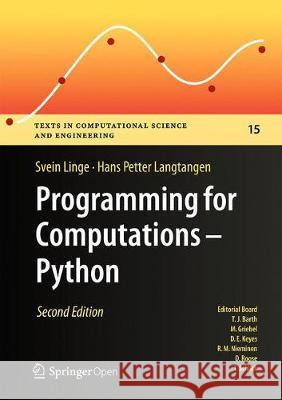Programming for Computations - Python: A Gentle Introduction to Numerical Simulations with Python 3.6 » książka
topmenu
Programming for Computations - Python: A Gentle Introduction to Numerical Simulations with Python 3.6
ISBN-13: 9783030168766 / Angielski / Twarda / 2019 / 332 str.
Programming for Computations - Python: A Gentle Introduction to Numerical Simulations with Python 3.6
ISBN-13: 9783030168766 / Angielski / Twarda / 2019 / 332 str.
cena 201,24
(netto: 191,66 VAT: 5%)
Najniższa cena z 30 dni: 192,74
(netto: 191,66 VAT: 5%)
Najniższa cena z 30 dni: 192,74
Termin realizacji zamówienia:
ok. 22 dni roboczych
Bez gwarancji dostawy przed świętami
ok. 22 dni roboczych
Bez gwarancji dostawy przed świętami
Darmowa dostawa!
Kategorie:
Kategorie BISAC:
Wydawca:
Springer
Seria wydawnicza:
Język:
Angielski
ISBN-13:
9783030168766
Rok wydania:
2019
Wydanie:
2020
Ilość stron:
332
Waga:
0.83 kg
Wymiary:
25.4 x 17.78 x 2.06
Oprawa:
Twarda
Wolumenów:
01
Dodatkowe informacje:
Wydanie ilustrowane











